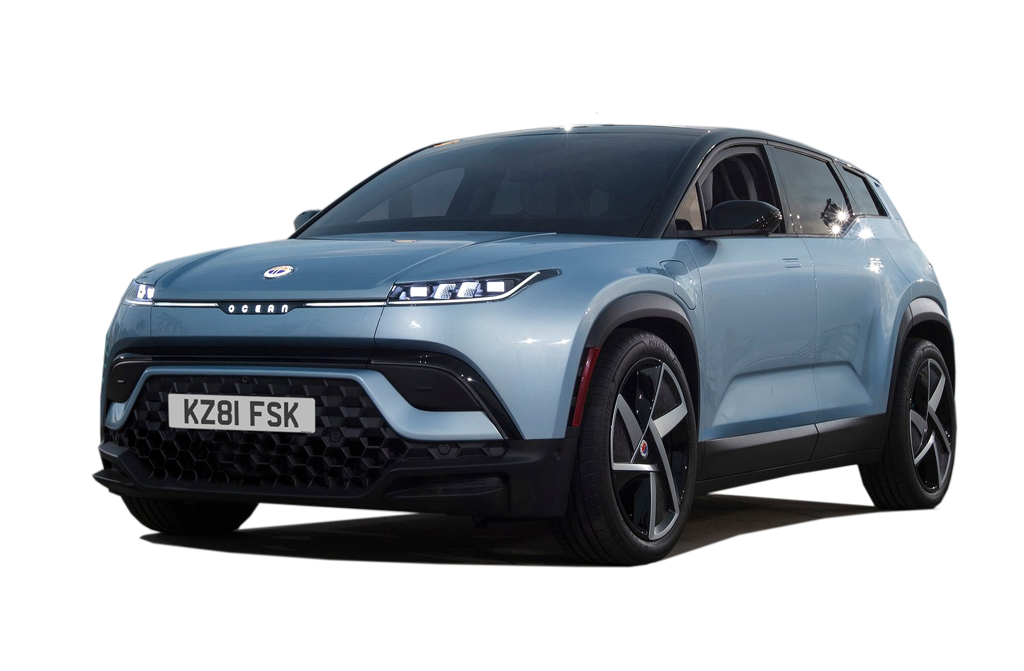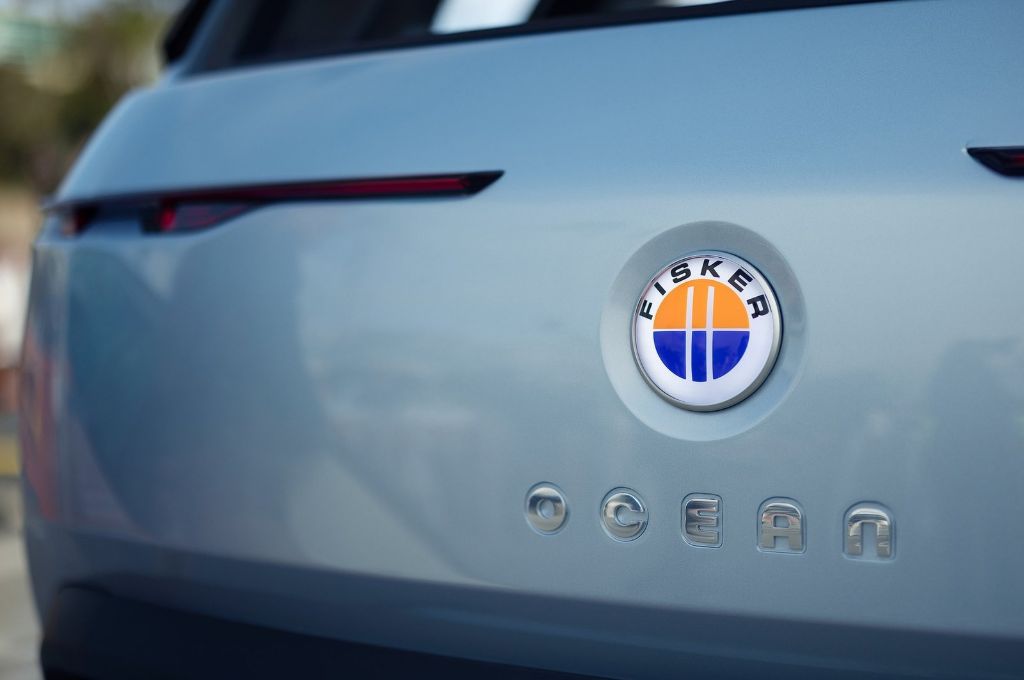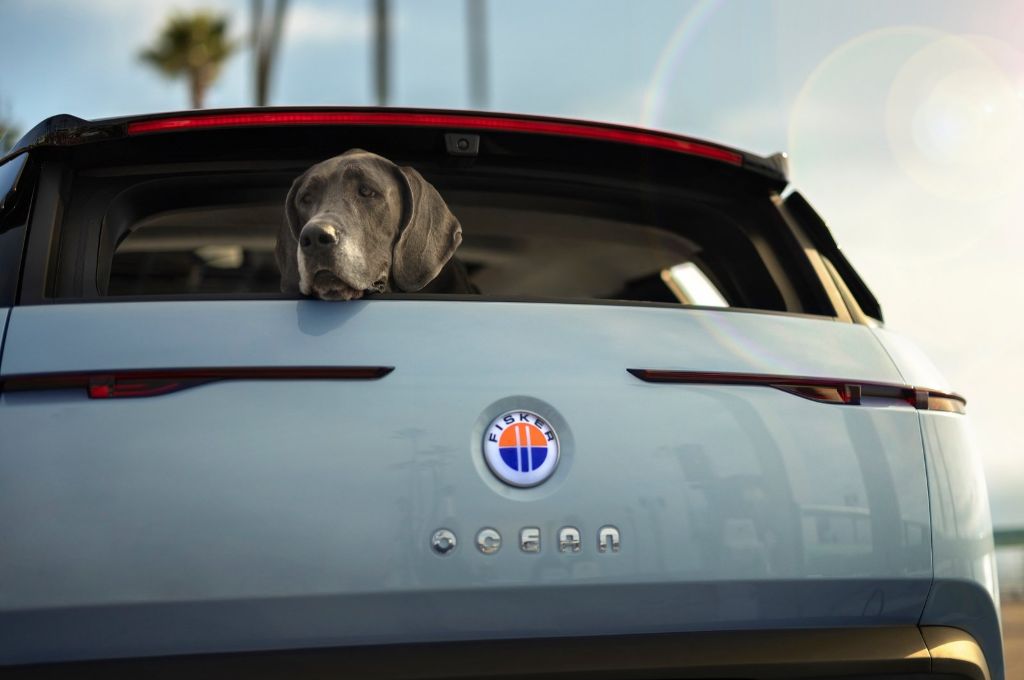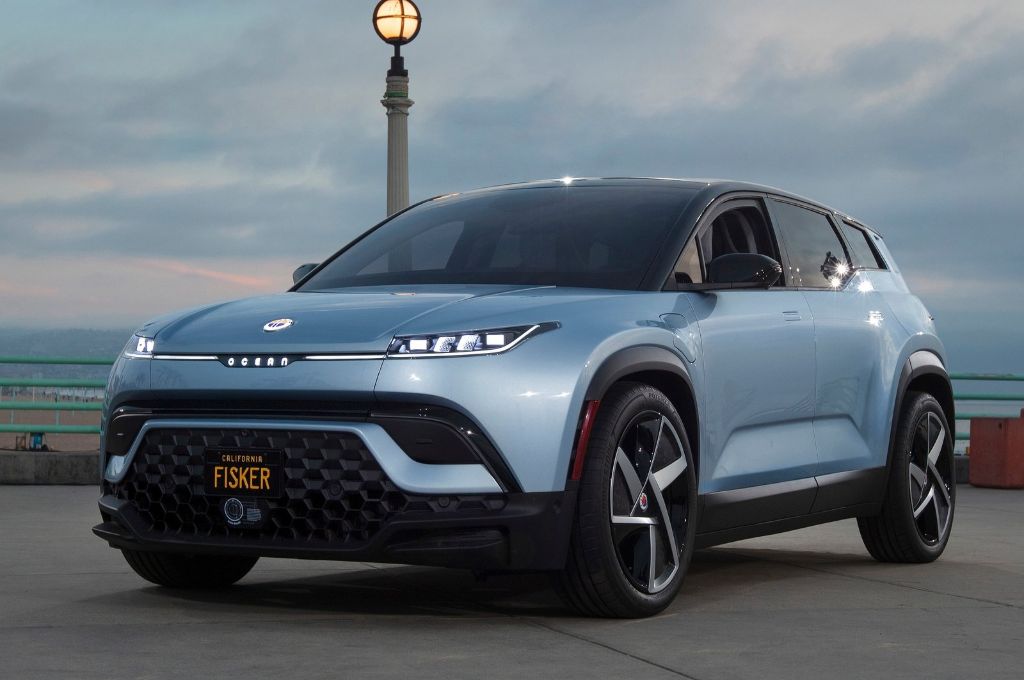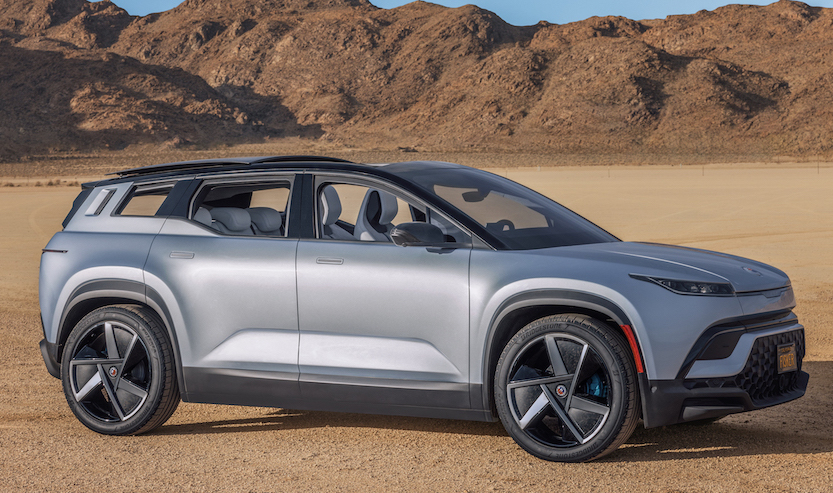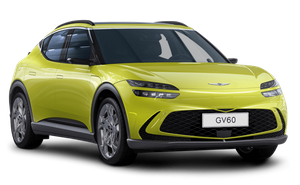The project has attracted huge interest during its development (700 UK customers have already reserved one) and all the early signs suggest that the Ocean could well be one to watch next year.
What is the Fisker Ocean?
The Ocean is an all-electric SUV which is roughly the size of a ŠKODA Enyaq or Volkswagen ID.4. at 4,640 long, 1,930 wide and 1,615 high. It is built on an all-new lightweight platform developed by Fisker and will be available in front wheel drive and all-wheel drive forms when the full range is available. Given that boss Fisker has been personally responsible for the looks of the BMW Z8 and Aston Martin DB9, it comes as no surprise that the Ocean wears a sharp look inside and out. While clearly recognisable as a family-sized SUV, a host of clever details, such as the illuminated OCEAN badge on the front grille, ultra-shallow lights and chunky three-spoke alloy wheels give the car a unique look. Sadly, the glowing badge at the front is unlikely to be a feature on UK cars thanks to European legislation that forbids it. Killjoys.
Inside, it's spacious with a boot that can rival a Volvo V90 for size. As with all bespoke electric cars designed without the need to accommodate a large engine bay or transmission tunnel, the Ocean has a broad, flat floor that gives a feel of spaciousness.
While the layout is relatively conventional, the Ocean has a few clever touches. These include a rotating ‘Revolve’ infotainment screen that can flip between landscape and portrait according to the driver’s needs. Portrait for driving, landscape for watching a movie while you’re recharging.
The cabin features a vegan interior that uses a host of recycled materials, including plastic bottles rescued from the sea, old fishing nets and even old t-shirts. Thankfully, none resemble their original form.
Another near feature is the Fisker SolarSky roof which is fitted to the Fisker Ocean Extreme and Fisker Ocean One models. According to Fisker, this has the potential to supply an additional 2,000 miles of range per year, under ideal conditions, and 1,500 under typical sunny skies in regions such as California. Expect that figure to be considerably lower in the UK…
In the back there’s plenty of leg and headroom and rear passengers will have their own touchscreens to control the climate and infotainment. Disappointingly though for some, there’s no frunk, so you’ll need to store your grubby charging cables in the boot. Boss Henrik Fisker told electrifying.com that the firm’s research showed that very few electric car owners actually use a frunk, so they saved the cost of development and testing for hinges and seals by not bothering with one.
A Fisker Ocean seven-seater is, according boss Henrik Fisker, in the pipeline, but not imminent. While the floor is capable of accommodating a third row of chairs, a seven-seater is unlikely to be offered until 2024 at the earliest.
Battery, range and charging
Fisker has yet to reveal the capacities of the two battery packs it will offer when the Ocean is launched next year, but Electrifying.com expects the entry-level pack to be around 80kWh in size with the larger battery to be more than 90kWh.
To reduce costs, Fisker will equip the front-wheel drive model with a pack that uses lithium-ion phosphate (LFP) cell chemistry supplied by CATL. According to Fisker, the entry level model will have a range of around 275 miles. LFP batteries are cheaper to produce and contain no cobalt, but have less energy density. That means the range of LFP batteries is usually less than a traditional Nickel Manganese Cobalt (NMC) battery packs. Tesla has been using LFP batteries in its lower-spec Model 3 variants for more than a year, so the technology is tried and tested.
Buyers wanting more range will be able to opt for a larger NMC pack. This will deliver power to the road via dual motors and all-wheel drive and Fisker simulations believe that European spec cars should be able to hit an impressive 390 miles on a single charge.
Although the Ocean will have a 400 volt electrical system rather than 800 volt system as fitted to the Kia EV6, Hyundai IONIQ 5 and Porsche Taycan, Fisker claims that both battery options will be able to DC fast charge at speeds of up to 250kW. This would put it on a par with Tesla, which offers a similar speed from a 400 volt system. Should this be the case, the Ocean will be able to add around 100 miles range in under eight minutes and an 80% charge in under 30 minutes.
The Fisker Ocean Sport will have an expected 0-62 mph time of 7.1 seconds with an output of 275bhp. TheOcean Ultra will have an estimated 0-62 mph time of 4.1 seconds, with an estimated output of 543bhp. The range-topping Ocean Extreme and Fisker Ocean One will have an estimated 0-62 mph time of 3.8 seconds, an estimated output of 543bhp.
The Ocean Sport will have Earth and Fun drive modes, while the Fisker Ocean Ultra and Fisker Ocean Extreme will add Hyper mode. The Fisker Ocean Extreme and the Fisker Ocean One will also have an Off-Road mode. The Fisker Ocean Ultra, Fisker Ocean Extreme, and Fisker Ocean One trims will have a Smart Traction torque-vectoring system to enhance performance and safety.
How much will it cost?
The Fisker Ocean will be built by Magna-Steyr at a carbon-neutral factory in Graz, Austria and will be priced from £34,990. That would put the Ocean in direct price competition with other SUVs such as the smaller battery versions of the Volkswagen ID.4, ŠKODA Enyaq and the Hyundai IONIQ 5.
The higher capacity, all-wheel drive Ocean models will be priced from £48,800 in the UK, with the range-topping Extreme model set to be £59,900 on the road.
When will it arrive?
Fisker is on schedule to start production of the Ocean next year at the Magna-Steyr factory in Austria. The plant is one of the biggest independent car factories in the world and carbon neutral than its American and mainland European buyers. Fisker told electrifying.com that right hand drive deliveries will arrive not long after production starts in November.
Where will I be able to buy one and have it serviced?
Fisker has yet to announce plans for its UK presence, but it is likely to follow the Tesla model of having online sales and a small number of sales and service ‘Fisker Experience’ centres around the UK.










